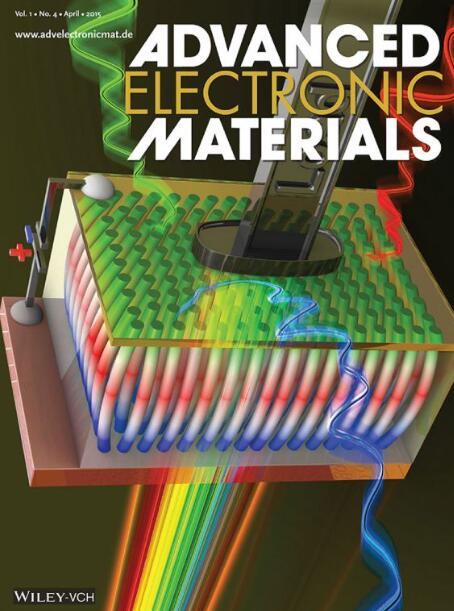机器学习辅助理解由点缺陷引起的铌酸锂的深度相关热导率
IF 5.3
2区 材料科学
Q2 MATERIALS SCIENCE, MULTIDISCIPLINARY
引用次数: 0
摘要
铌酸锂(LiNbO3, LN)具有独特的电光和压电特性,广泛应用于光器件、电信、传感器和声学系统中。导热系数κ是影响这些应用的性能和可靠性的关键特性。点缺陷在LN中普遍存在,可显著降低其κ。然而,点缺陷对LN中热输运的影响仍然知之甚少。在这项工作中,通过在600-800°C的热还原制备LN晶体,诱导氧空位(VO)的深度依赖分布,随着还原温度的升高,氧空位(VO)的浓度增加。时域热反射和方形脉冲源测量显示,由于VO的深度相关分布,κ有显著的抑制和显著的梯度。开发了具有从头算精度的机器学习潜力来模拟LN中典型点缺陷对热输运的影响,表明VO主要通过影响低于6太赫兹的低频声子的输运来抑制κ。值得注意的是,铌空位和反位缺陷表现出相似的影响,而锂空位的影响最小。这项工作强调了VO在调制κ中的主导作用,并为先进的基于lnl的器件和类似铁电晶体的缺陷工程提供了见解。本文章由计算机程序翻译,如有差异,请以英文原文为准。

Machine-Learning-Assisted Understanding of Depth-Dependent Thermal Conductivity in Lithium Niobate Induced by Point Defects
Lithium niobate (LiNbO3, LN) has unique electro-optic and piezoelectric properties, making it widely used in optical devices, telecommunications, sensors, and acoustic systems. Thermal conductivity κ is a critical property influencing the performance and reliability of these applications. Point defects commonly exist in LN and can significantly reduce its κ. However, the effects of point defects on thermal transport in LN remain poorly understood. In this work, LN crystals are prepared through thermal reduction at 600–800 °C, inducing a depth-dependent distribution of oxygen vacancies (VO) that increases in concentration with increasing reduction temperature. Time-domain thermoreflectance and square-pulsed source measurements reveal a significant suppression and a notable gradient in κ, attributed to the depth-dependent distribution of VO. A machine learning potential with ab initio accuracy is developed to simulate the impact of typical point defects on thermal transport in LN, demonstrating that VO predominantly suppresses κ by affecting the transport of low-frequency phonons below 6 THz. Notably, niobium vacancies and antisite defects exhibit similar effects, whereas lithium vacancies show minimal impact. This work highlights the dominant role of VO in modulating κ and provides insights into defect engineering for advanced LN-based devices and similar ferroelectric crystals.
求助全文
通过发布文献求助,成功后即可免费获取论文全文。
去求助
来源期刊

Advanced Electronic Materials
NANOSCIENCE & NANOTECHNOLOGYMATERIALS SCIE-MATERIALS SCIENCE, MULTIDISCIPLINARY
CiteScore
11.00
自引率
3.20%
发文量
433
期刊介绍:
Advanced Electronic Materials is an interdisciplinary forum for peer-reviewed, high-quality, high-impact research in the fields of materials science, physics, and engineering of electronic and magnetic materials. It includes research on physics and physical properties of electronic and magnetic materials, spintronics, electronics, device physics and engineering, micro- and nano-electromechanical systems, and organic electronics, in addition to fundamental research.
 求助内容:
求助内容: 应助结果提醒方式:
应助结果提醒方式:


